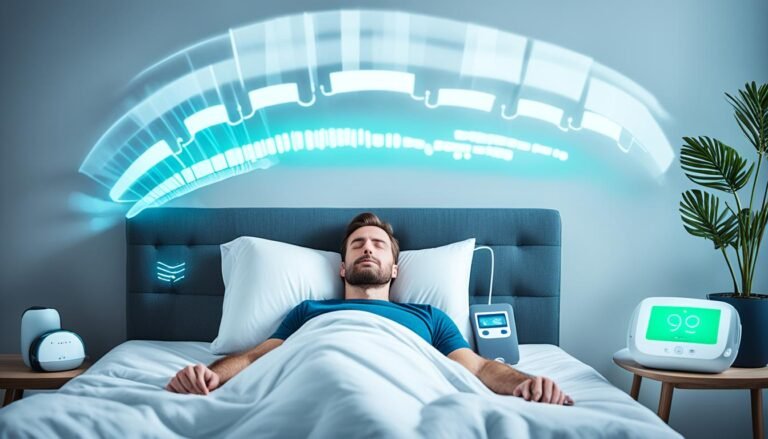Exploring the Potential of Augmented Reality in E-commerce
Augmented Reality presents a game-changing potential in e-commerce by offering interactive shopping experiences, enhancing consumer behavior, and driving online retail growth. From realistic product previews to interactive try-on experiences and customizable virtual spaces, AR elevates engagement and reduces return rates. Brands leverage AR for immersive interactions, personalized shopping journeys, and redefining online retail experiences that boost customer engagement and loyalty. AR-driven marketing strategies enhance customer connections and brand awareness. Overcoming e-commerce challenges with seamless AR integration guarantees efficiency and personalized user experiences, while future trends promise even more innovative AR applications in the e-commerce landscape.
Key Takeaways
- AR revolutionizes e-commerce experiences.
- Enhances product visualization for informed choices.
- Interactive try-on experiences boost engagement.
- Personalized virtual spaces elevate customer connection.
- AR-driven marketing strategies enhance brand engagement.
The Rise of AR Technology
The ascent of Augmented Reality (AR) technology has revolutionized the landscape of e-commerce, propelling businesses into a new era of interactive and immersive shopping experiences. AR technology in e-commerce has not only enhanced consumer behavior but also notably contributed to the growth of online retail. The ability of AR to provide personalized and engaging shopping experiences has captured the interest of consumers and driven e-commerce growth exponentially.
AR shopping experiences have reshaped the way consumers interact with products online, offering a level of engagement that was previously unattainable. By allowing customers to visualize products in real-world environments through AR applications, businesses can bridge the gap between online and in-store shopping experiences. This immersive technology has proven to increase consumer confidence in purchasing decisions, reduce product returns, and ultimately boost sales.
The integration of AR technology in e-commerce has not only elevated the shopping experience but has also provided businesses with valuable insights into consumer preferences and behavior. Leveraging AR capabilities can give companies a competitive edge in the dynamic e-commerce market, setting the stage for continued innovation and growth.
Enhancing Product Visualization
By leveraging augmented reality (AR) technology, e-commerce platforms can offer customers realistic product previews, enabling them to make more informed purchasing decisions.
Interactive try-on experiences further enhance the shopping journey by allowing users to virtually test products before buying, increasing engagement and reducing return rates.
Additionally, customizable virtual spaces provide a personalized shopping environment, catering to individual preferences and fostering a more immersive and memorable customer experience.
Realistic Product Previews
Incorporating advanced augmented reality technology into e-commerce platforms can greatly elevate the customer experience. This is achieved by providing hyper-realistic product previews, which enhance product visualization. Features like 360-degree views and product customization allow consumers to interact with products virtually, gaining a thorough understanding of their design and functionality.
Detailed textures and accurate sizing displayed through augmented reality enable customers to assess the quality and fit of items more accurately. This, in turn, reduces the likelihood of returns due to mismatched expectations. Realistic product previews enhance consumer confidence in their purchase decisions, leading to increased satisfaction and potentially reducing the overall return rates for e-commerce businesses.
Interactive Try-On Experiences
Revolutionizing the online shopping experience, Interactive Try-On Experiences in e-commerce introduce a dynamic approach to product visualization. By integrating virtual fitting rooms and gamified experiences, customers can now digitally try on clothing and accessories in real-time, enhancing their shopping journey.
AR makeup simulations allow users to experiment with different looks without physically applying products, while digital accessories provide a way to visualize how items like jewelry or sunglasses complement an outfit. These interactive try-on experiences not only engage customers but also reduce the uncertainty associated with online shopping, leading to higher satisfaction and increased purchase confidence.
As e-commerce continues to evolve, leveraging such technologies can have a substantial impact on conversion rates and customer loyalty.
Customizable Virtual Spaces
Enhancing the product visualization experience in e-commerce, Customizable Virtual Spaces offer a dynamic platform for customers to personalize their virtual environments and interact with products in a more immersive and tailored manner.
Through virtual customization, users can create personalized spaces where they can visualize products in a setting that resonates with their preferences. This interactive design enables customers to engage in immersive browsing experiences, fostering a deeper connection with the products they are interested in.
Virtual Try-On Experiences
With virtual try-on experiences, e-commerce businesses can offer enhanced product visualization, leading to improved size accuracy for customers.
By providing interactive style suggestions, companies can engage users in a more personalized and immersive shopping experience, ultimately driving conversion rates and customer satisfaction.
Leveraging augmented reality in this way can revolutionize the online shopping landscape, setting businesses apart in a competitive market.
Enhanced Product Visualization
The integration of enhanced product visualization through virtual try-on experiences is reshaping the way consumers interact with products in the e-commerce landscape. Virtual fitting rooms provide customers with an immersive shopping experience, allowing them to virtually try on clothing, accessories, or even makeup before making a purchase. This technology enhances the online shopping journey by bridging the gap between the digital and physical retail experiences. By offering a realistic preview of how products look or fit, virtual try-on experiences reduce uncertainty and increase consumer confidence, leading to higher conversion rates and lower return rates for e-commerce businesses. Below is a comparison table showcasing the benefits of enhanced product visualization through virtual try-on experiences:
| Benefits | Description | Example |
|---|---|---|
| Enhanced Engagement | Increase customer interaction with products | Virtual clothing try-on |
| Improved Decision Making | Help customers make informed purchase decisions | Virtual makeup try-on |
| Reduced Returns | Lower return rates due to better fit expectations | Virtual eyewear try-on |
Improved Size Accuracy
Implementing advanced algorithms for precise body measurements is revolutionizing the accuracy of virtual try-on experiences in e-commerce, optimizing the fit of clothing and accessories for online shoppers. Accurate measurements guarantee precise fitting, leading to an improved user experience and enhanced customer satisfaction.
By utilizing cutting-edge technology, e-commerce platforms can now offer virtual try-on features that accurately reflect how a garment or accessory will look and fit on an individual. This level of detail not only reduces returns due to size discrepancies but also enhances the overall shopping experience for customers.
The ability to try on items virtually, knowing they will fit well, provides a sense of confidence and convenience that drives customer loyalty and increases sales.
Interactive Style Suggestions
Utilizing sophisticated algorithms and AI technology, e-commerce platforms are revolutionizing the virtual try-on experience by offering interactive style suggestions that enhance customer engagement and satisfaction.
Virtual styling tools powered by augmented fashion technology allow customers to virtually try on clothing and accessories, enabling them to visualize how items would look in real life accurately. These interactive experiences provide personalized recommendations based on individual preferences, body measurements, and style choices.
Improving Customer Engagement
Enhancing customer engagement remains a pivotal strategy for maximizing the impact of augmented reality technology in e-commerce. By leveraging augmented reality (AR) experiences, e-commerce businesses can create immersive interactions that enhance customer feedback and brand storytelling. Through AR, customers can visualize products in their own space, leading to a more informed purchasing decision. This interactive experience not only increases engagement but also fosters a deeper connection between the customer and the brand.
Customer feedback plays a vital role in improving products and services. AR technology allows customers to provide real-time feedback on virtual try-on experiences, product customization, and more. This valuable data can be used to refine offerings and tailor the shopping experience to customer preferences.
Moreover, AR provides a unique platform for brand storytelling. E-commerce businesses can use AR to showcase their brand's history, values, and craftsmanship in an interactive and engaging way. By immersing customers in compelling narratives, brands can establish a stronger emotional connection and differentiate themselves in a competitive market.
Personalizing the Shopping Journey
To further optimize the impact of augmented reality technology in e-commerce, personalizing the shopping journey through tailored AR experiences is paramount for enhancing customer satisfaction and driving conversion rates. By offering personalized recommendations and creating interactive shopping experiences, businesses can forge deeper connections with their customers, leading to increased loyalty and repeat purchases.
Here's how personalized AR shopping journeys can revolutionize the e-commerce landscape:
- Emotional Connection: Providing personalized recommendations through AR not only simplifies the decision-making process for customers but also makes them feel understood and valued, fostering a sense of emotional connection with the brand.
- Enhanced Engagement: Interactive shopping experiences powered by AR technology engage customers on a whole new level, allowing them to virtually try products, visualize how items fit in their space, and explore different options in a fun and interactive way.
- Improved Customer Satisfaction: Tailoring the shopping journey through AR leads to higher customer satisfaction levels as individuals feel catered to and empowered in making informed purchase decisions, ultimately boosting overall satisfaction and brand loyalty.
Redefining Online Retail Experiences
In the domain of e-commerce, revolutionizing online retail experiences through cutting-edge technology and customer-centric strategies is imperative for staying ahead in a rapidly evolving market landscape. Customer engagement lies at the core of redefining online retail experiences. By leveraging augmented reality (AR) technology, e-commerce businesses can offer innovative solutions such as virtual fitting rooms, enabling customers to visualize products in a personalized and interactive way.
Virtual fitting rooms, powered by AR, allow customers to try on clothing and accessories virtually, enhancing the online shopping experience by providing a more realistic sense of fit and style. This not only reduces the likelihood of returns due to sizing issues but also boosts customer confidence in their purchase decisions. The interactive nature of virtual fitting rooms not only fosters engagement but also creates a memorable and immersive shopping journey for customers, ultimately leading to increased satisfaction and loyalty.
AR-Driven Marketing Strategies
With the rapid integration of augmented reality (AR) technology in online retail experiences, businesses are strategically leveraging AR-driven marketing strategies to enhance customer engagement and drive sales.
AR advertising campaigns are becoming increasingly popular as they offer immersive experiences that capture consumers' attention and create memorable interactions with products.
Through AR-powered promotions, businesses can elevate brand awareness by providing unique and interactive ways for customers to explore their offerings.
This innovative approach not only differentiates brands in a crowded market but also fosters a deeper connection with the audience.
By incorporating AR into marketing strategies, companies can boost customer engagement levels noticeably, leading to increased sales conversions and brand loyalty.
Embracing AR technology allows businesses to stay at the forefront of digital marketing trends, demonstrating a commitment to innovation and customer-centric experiences.
Overcoming E-commerce Challenges
Traversing the intricate landscape of e-commerce presents a myriad of challenges that require innovative solutions and strategic approaches to overcome. One key challenge is ensuring e-commerce efficiency through seamless technology integration. This involves streamlining processes, optimizing website performance, and integrating robust e-commerce platforms to enhance operational efficiency and deliver a smooth user experience.
Additionally, focusing on enhancing customer experience and user interaction is paramount. Personalization, interactive product visualization, and responsive customer service are essential for building customer loyalty and satisfaction. By leveraging data analytics and AI-powered tools, businesses can gain valuable insights into customer behavior and preferences, enabling them to tailor their offerings and interactions effectively.
Addressing these challenges requires a holistic approach that combines technology, data-driven insights, and a customer-centric mindset. By prioritizing e-commerce efficiency and optimizing customer experience, businesses can navigate the complexities of the e-commerce landscape and drive sustainable growth in the digital marketplace.
Future Trends and Innovations
To stay ahead in the dynamic landscape of e-commerce, it is essential to anticipate and embrace upcoming trends and innovations that will shape the future of online retail. The following trends are set to revolutionize the e-commerce industry:
- AR Powered Recommendations: Augmented Reality (AR) is set to transform how products are recommended to consumers. By using AR technology, businesses can provide personalized and interactive recommendations, enhancing the overall shopping experience for customers.
- Futuristic Shopping Experiences: Next-generation virtual shopping experiences are on the horizon, offering customers the ability to virtually try on clothing, test out products, and visualize items in their own space before making a purchase. This immersive shopping experience will bridge the gap between online and in-store shopping.
- AR Integration Opportunities: The integration of AR into e-commerce platforms presents endless opportunities for businesses to engage customers in innovative ways. From virtual showrooms to interactive product demonstrations, AR will play a significant role in shaping the future of online retail.
Embracing these advancements will be pivotal for businesses looking to stay competitive in the evolving e-commerce landscape.
Conclusion
To sum up, the integration of augmented reality in e-commerce has shown immense promise in revolutionizing the online shopping experience. As AR technology continues to evolve and expand its capabilities, businesses can leverage its potential to enhance product visualization, engage customers with virtual try-on experiences, and personalize the shopping journey.
By embracing these innovations, e-commerce platforms can stay ahead of the curve and redefine the future of online retail. The future holds great potential for those who dare to embrace the transformative power of AR technology.







